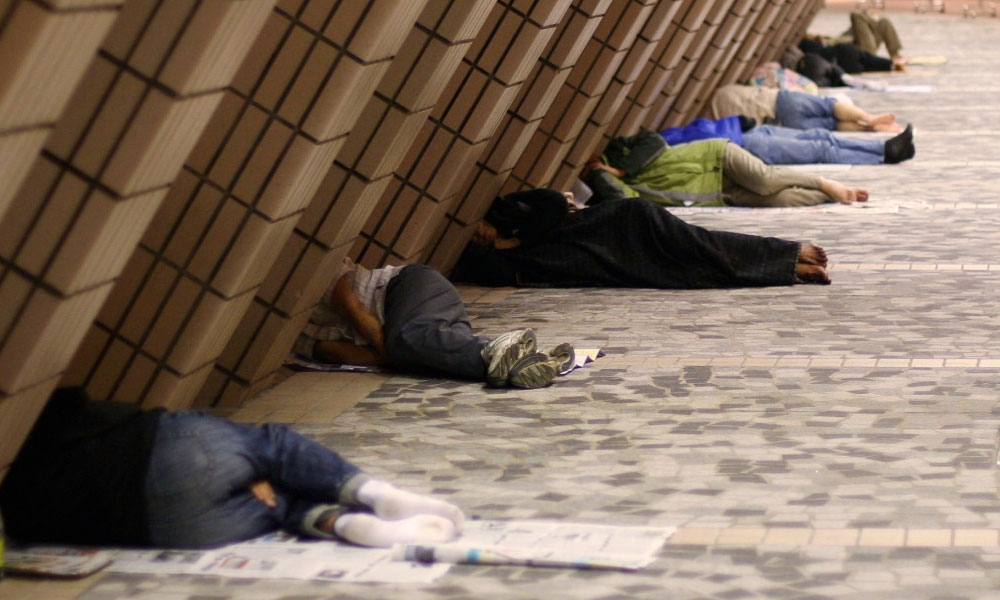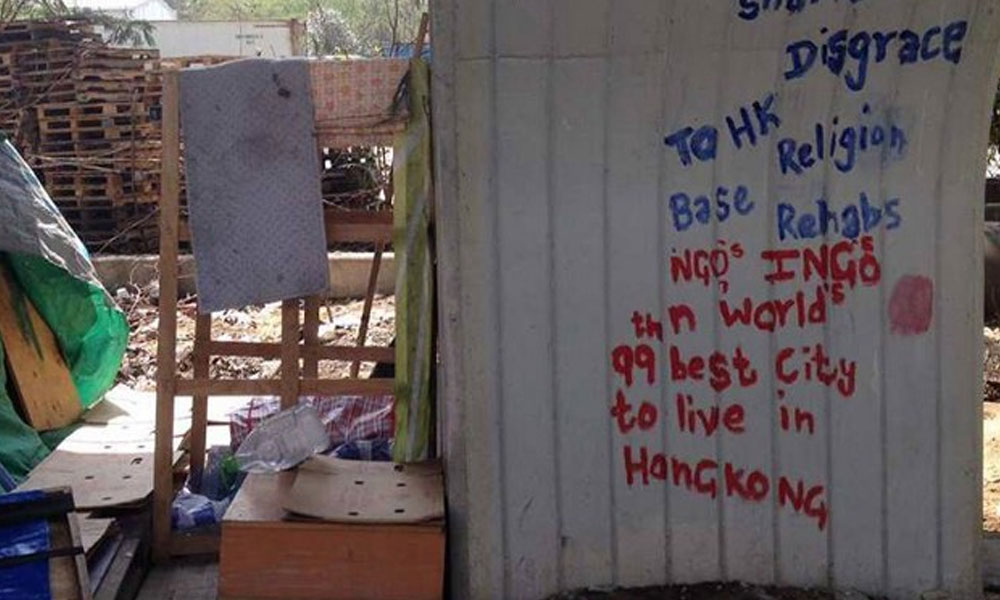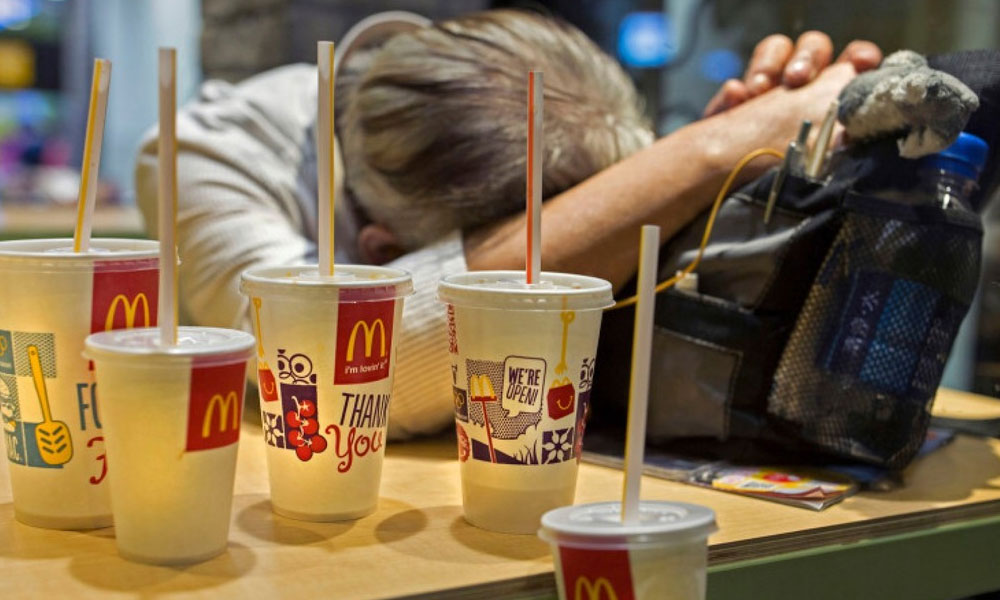Cheung Muk-gun’s home is an illegal, wooden shack under a highway in one of the poorest areas of Hong Kong, where sky-high property prices and a yawning wealth gap have helped fuel a surge in homelessness.
The 72-year-old earns about HK$10,000 (US$1,279) a month working seven days a week at a frozen meat store in the working-class district of Mong Kok, a short trip across Victoria Harbour from the city’s opulent financial centre.
With property prices up 200 percent in the past decade, and a bed in a tiny, windowless apartment - often shared with other tenants - going for about HK$2,000 a month, Cheung said he preferred to live in his shack.
An apartment of around 250 square feet (23 square meters) in a new building with windows and a bathroom near Mong Kok would rent for about HK$12,000.
“Why would I want to spend so much on rent, not to mention other related miscellaneous expenses. After paying all that, my salary could hardly cover my daily expenses,” he said.

Since Cheung became a street sleeper more than five years ago, Hong Kong’s homeless population has jumped about 30 percent to 1,800, according to the Society for Community Organisation (SocO), a non-governmental human rights group.
That compares with government data showing 1,075 registered street sleepers as of end-2017 and is double the 908 recorded in 2016. Government figures do not include so-called “McRefugees” who sleep in fast-food chains - whose numbers are significant but not officially counted - indicating homelessness is rapidly worsening in the Chinese territory of 7.3 million people.
While Hong Kong has far fewer homeless residents than, say, the almost 58,000 in Los Angeles County, the pace of their increase has alarmed social workers.
The crisis has piled pressure on the government after scores of protests in recent years over the soaring cost of accommodation. The Social Welfare Department says it is responding by helping street sleepers re-integrate into the community and working with six non-government organisations that operate hostels and emergency shelters.
“During the stay in the hostels, responsible social workers will assist street sleepers to identify long-term accommodation or appropriate residential care,” a department spokeswoman said.

In Singapore, Hong Kong’s traditional rival as a regional financial hub, the government estimates about 300 individuals and families are homeless out of a population of 5.6 million, thanks mainly to an adequate supply of subsidised housing and more affordable housing generally.
But in Hong Kong, severe shortages of affordable accommodation are driving more and more people onto the streets. Homelessness is now affecting sections of the population who previously could afford a place to live, such as those with jobs, according to rights groups.
About one in five people live below the poverty line even as Hong Kong’s wealth gap swells to its widest in more than four decades.
‘McRefugees’
While the government provides shelters and subsidised housing for homeless people, critics say caps on the length of time they can stay only offer short-term relief.
SoCO social worker Ng Wai-tung estimates 25 percent of Hong Kong’s homeless population are McRefugees - people who call fast-food outlets home. He expects to see more in the summer when street sleepers seek air-conditioning to cool down.
Slouched in a corner of a 24-hour McDonald’s in Kowloon district, Wong Shek-hei, 65, said he earned HK$7,000 a month as a cleaner. He left a bed that cost about HK$1,500 a month more than three weeks ago, when bed bugs and disturbances from drug addicts drove him to the fast-food restaurant.
“In summer there are more than 20 people sleeping here,” he said.

Reuters visited four 24-hour McDonald‘s, where it found on average six people bedding down of a night in each of the restaurants. Some lay stretched out with their shoes off, while others slept with their heads on tables.
“Since more than 120 McDonald’s restaurants are operating around the clock among our around 240 restaurants in Hong Kong, there could be chances that some customers stay in our restaurants overnight,” McDonald’s told Reuters.
“McDonald’s Hong Kong is accommodating to people (who) stay long in the restaurant for their own respective reasons.”
As the homeless population grows, rough-sleepers are appearing in areas they were rarely seen previously.
“The situation has definitely worsened in the past two years and we see Tsuen Wan as a new location for the homeless to gather,” said Olivia Chan, a social worker with Christian Concern for the Homeless Association, referring to a district on the mainland north of Mong Kok.
“More and more people are sleeping in fast-food shops now.”
One McRefugee surnamed Yeung, who has been sleeping at a McDonald’s branch for the past eight months, said the outlet was a safe haven for him.
“McDonald’s doesn’t approve of you sleeping here, but they turn a blind eye,” Yeung, who declined to use his full name due to concerns over job security, told Reuters.
“It’s a shelter from the rain, the heat, the cold and the bad.”
- Reuters

